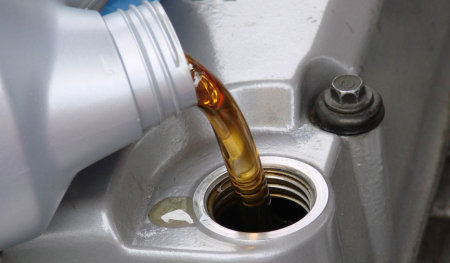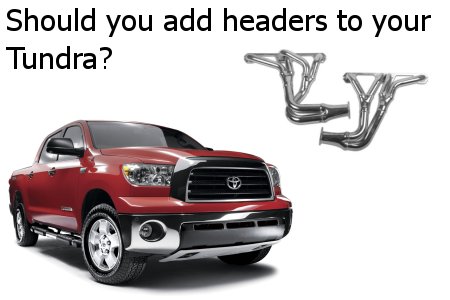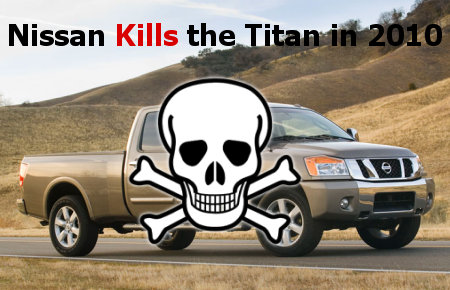
 Author Archive for Jason Lancaster
Author Archive for Jason Lancaster
Jason Lancaster is the editor and founder of TundraHeadquarters.com. He has nearly a decade of experience on the retail side of the auto industry, and another decade of experience of the part and accessory side of the industry.
The Blue Ribbon Coalition – Protecting The Right To Go Off-Road
A lot of off-roaders got into the sport in the first place because they love being outdoors. There’s something special about breaking trail in the morning as the sun comes up and scatters light off the dew on the trees all around, or the way the forest or desert sounds at dusk as a new nature cycle slowly creeps in along with the darkness. A lot of the most pristine and untouched areas are only accessible via four-wheel drive vehicles, and the isolation and splendor of these vistas are something that off-road drivers treasure.

Much of the best four-wheeling land also happens to be public land, a fact that is both a bonus and a scourge to 4×4 drivers. Not all areas have a history of being friendly to off-roaders interested in trail driving, and sometimes off-road use is banned for arbitrary and uninformed reasons. Fortunately, there’s an organization devoted to protecting the use of public land while also protecting the environment – the BlueRibbon Coalition.
Toyota Says 2010 Tundra 4.6L Can Go 10k Miles Between Oil Changes, Requires Full Synthetic
As has been rumored on a few internet forums, Toyota is expected to officially announce a change to the oil change interval for a series of 2010 Toyota vehicles – including the 2010 Toyota Tundra with the new 4.6L V8. Toyota will inform 4.6L Tundra owners that they can go 10,000 miles between oil changes but that they must use 0W-20 synthetic oil. If any 2010 4.6L Tundra owners have already done a full-synthetic oil change at 5k miles, Toyota will credit them a free oil change.

Toyota requires 0W-20 full synthetic oil on new 4.6L 2010 Tundras
Note – if you’re not sure about the difference between synthetic and “natural” motor oil, check out this post about synthetic oil.
However, while the use of 0W-20 synthetic oil is now required for the 2010 and up 4.6L Tundra, the 10k mile oil change interval recommendation is not for Tundras that are used in such a way as to qualify as “severe duty.” Severe duty trucks will instead need oil changes at 5,000 miles.
Tundra Headers From Doug Thorley, Gibson, and JBA
Earlier this week we asked the question Should You Add Headers to your Tundra? The answer? It depends. While headers will definitely improve the performance of a bone-stock Tundra, they’re more beneficial on trucks that already have copious performance upgrades. After-market headers are performance multipliers – they’ll add at least 10 horsepower on a stock truck, but some people have gained 20 or even 30 horsepower on Tundras that have significant performance upgrades like a UniChip engine tuner or a supercharger.
Let’s take a look at three popular header choices for the Toyota Tundra and see how they stack up against each other.
Search terms people used to find this page:
- installing short headers on 2007 tundra
Should You Add Headers To Your Tundra?
When it comes to adding power to your Tundra, replacing your stock exhaust manifolds with headers is an option worth exploring. Stock exhaust manifolds are typically designed with low cost in mind, and on many vehicles they are restrictive and inefficient when compared to after-market headers. On most vehicles, replacing the stock exhaust manifold with headers will remove flow restrictions inherent in the standard system and scavenge as much exhaust gas as possible out of the engine. For most trucks (especially trucks made more than 5 years ago), headers are a great way to add decent power to a stock engine.

Tundra owners wonder - headers, or no headers?
However, fans of the 2nd-generation Tundra know that the stock exhaust manifold on the 4.6L and 5.7L Tundra is actually quite good. In fact, the stock exhaust manifold on newer Tundra trucks is one of the more sophisticated factory exhaust manifolds you’ll find. They’re an efficient stainless steel 4 into 2 into 1 design, a configuration that’s known for moving exhaust gases quickly. The Tundra’s stock exhaust manifold tubes are also equal length for each cylinder. Equal length tubes are important because they facilitate consistent back pressure in each cylinder, improving overall performance.
The bottom line for 2nd-gen Tundra owners (07′ and up models) is that replacing the standard exhaust manifold with a set of less restrictive after-market headers isn’t going to result in huge gains. Still, that’s not to say that adding headers to a Tundra will have no impact.
5 Auto Industry Predictions for 2010
This time last year, we made 5 auto industry predictions for 2009…and we did OK. While we were right about Saab and Saturn closing, Ford’s sale of Volvo, and Ford’s stock price, we were completely and totally wrong about the sales volume. Our gas price prediction was wrong too, but we weren’t off by much. All in all, a decent set of predictions for 2009. Here’s what we’re predicting for 2010:

Nissan will kill the Titan in 2010.
1. Nissan kills the Titan. It’s a bold prediction that we’re not 100% comfortable with, but here goes: The Titan doesn’t make money, so Nissan isn’t going to keep it.

